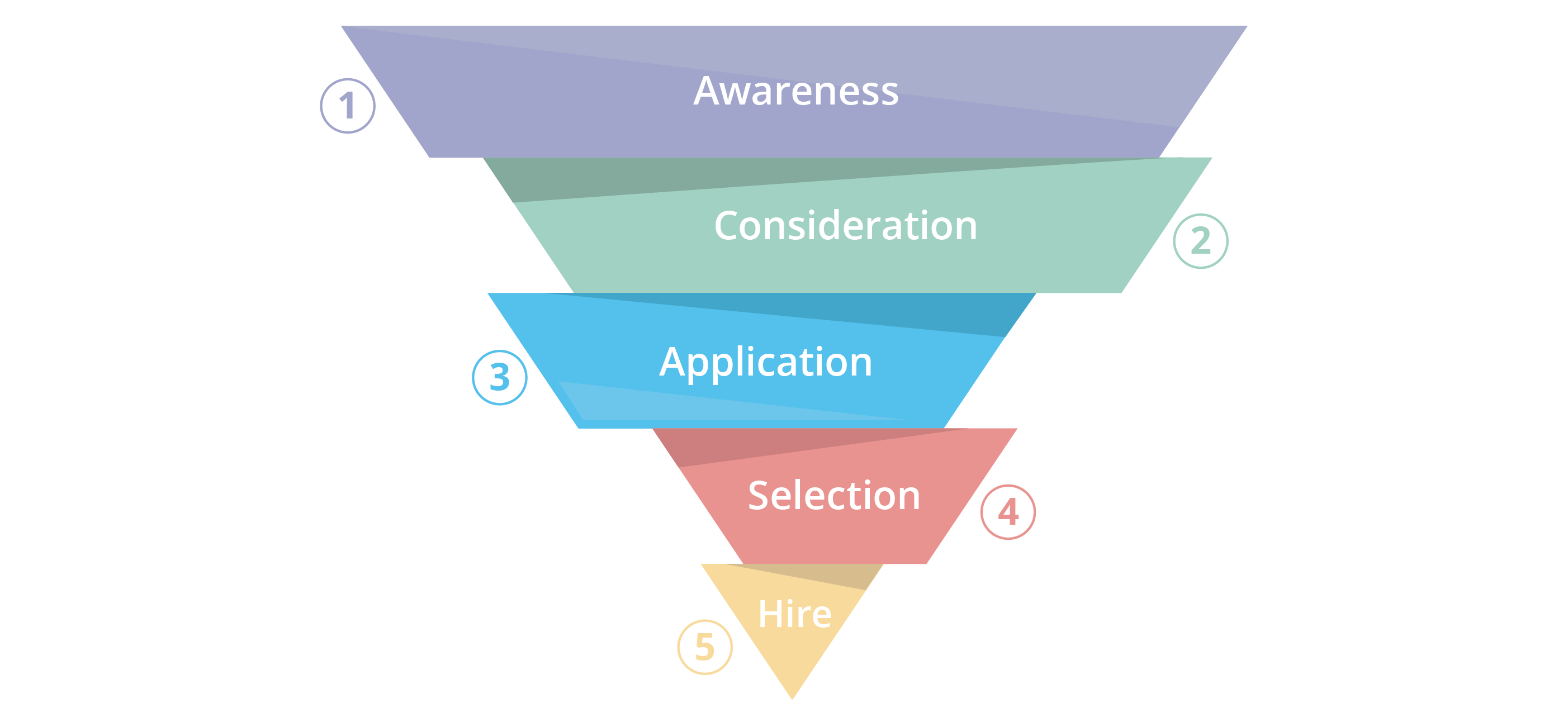Mapping the Candidate Journey to Improve Recruiting Results
 There is an old adage that goes “A failure to plan, is a plan to fail.” Planning things out is foundational when you want to succeed and improve results of any kind. So in this ultra-competitive world for awesome talent, you need to have a plan if you want to get the best people on your team. This is where mapping the candidate journey comes in rather handy!
There is an old adage that goes “A failure to plan, is a plan to fail.” Planning things out is foundational when you want to succeed and improve results of any kind. So in this ultra-competitive world for awesome talent, you need to have a plan if you want to get the best people on your team. This is where mapping the candidate journey comes in rather handy!
Candidate journey mapping allows you to see where issues might arise and plan to reduce or eliminate them entirely. After all, 78% of candidates say that they feel their candidate experience is indicative of how a company treats employees. Mapping out your candidate journey will show where you can improve the candidate experience and streamline certain aspects to get better results.
So let’s jump in and learn how to plan for some hiring success!
Candidate Persona
To get things started, you first need to identify what kind of candidate you want to attract. Personas will be different for the different jobs you might post. For instance, you’ll probably want a different personality type for a software developer than a sales rep. With that said, all candidate personas that you make should take your company culture into consideration. Your company culture is your bedrock.
Taking your culture into consideration will help refine your hiring process. Refining allows you to find people that compliment and fit well with your current employees. Many companies use their hiring process to vet candidates to ensure that they will be a good fit. This verification could entail completing a skill-testing assignment or even inviting them for a test day of paid work, to see if they will mesh with your team. Remember these things when you build out your candidate persona.
Building The Foundation

Before we sink our teeth into how to use journey mapping for hiring, first we need to build out a foundational understanding of the map. The easiest way to think of the candidate journey is a funnel. You have a ton of people at the top and only one at the bottom.
At the very top, we have the Awareness stage. You have a whole bunch of people who know of your brand or are getting to know of you. These are the people who follow your social media accounts, are on your mailing lists, or may have even bought your product/service. The main thing is that they have a general idea of who you are and what you do.
The next stage of the funnel is after you post your job, which is the Consideration stage. Potential candidates are now considering applying for your job. The consideration stage is where people will conduct research on you to try and find out if they will generally fit with your organization. They are seeking the answers to questions like, “would I enjoy working here?”
The next stage is the Application stage. This stage is where people conclude their research, then deem you as a desirable place to work and submit their application to you. This stage marks the shift away from an employer branding strategy to your candidate experience. Now the ball is fully in your court to make sure things go smoothly.
The last two stages are Selection and Hire. Simply put, Selection is when you sort through your candidates to find the perfect one. Hire is when you send an offer, and they accept. Here is a handy graphic to keep things organized:

Things To Consider
Now that you have a sense of the different stages of the candidate journey and an idea of whom you want to attract, it’s time to look at how to optimize each stage. Optimizing will ensure that your candidates are enjoying their experience. How you maximize results will depend on your candidate persona and your company’s culture. There are some general tips and things to keep in mind, however.
The most important part of mapping out the candidate journey is to put yourself in the candidate’s shoes. That might sound cliché, but it’s the best way to analyze each stage and figure out what’s happening for the candidate.
At the first two stages, Awareness and Consideration, the candidate wants to know about you. They want to know who you are and what they get out of working with you. A great employer branding strategy comes in nice and handy for this! The better you brand your company, the more quality candidates you will get! The key here is to show why your company is a better place to work than your competitors.
The Application stage is where many employers drop the ball with candidate experience. Think about how the whole process to apply is. Do they only submit a resume and cover letter or do you ask several questions for more information? Is your application process mobile-friendly? Do you tell the candidate that you have received their application? These questions, and applying for your job yourself, will help you discover where candidate pain-points are.
Once you reach the selection stage, things can be a little nerve-wracking for candidates, especially if they haven’t heard from you for a while. It’s an excellent habit to contact candidates every two weeks with a small update. Use your judgement on what you should communicate and how often, but the idea is to let candidates now that they haven’t been forgotten. No one likes that.
Finally, the Hire stage. What’s essential in this stage is prepping the candidate to become an employee. A big concern for the candidate in this final stage is if they made the right decision to join your company. Will they enjoy their time in your employment. Think about how you onboard new hires. How can you make new employees feel apart of the team faster? How can you reassure your new hire that they made a great decision joining your team? Nail these questions, and you’ll be well on your way to improve your hiring results!
Candidate Journey Feedback
Once you start mapping things out and thinking where you could improve, it’s important to remember to gather feedback from your candidates. Your ideas and perception might not line up perfectly with reality. Feedback will help you find the difference.
There are a couple of different ways to collect feedback from candidates (surveys, follow-up call, etc.). Use the one you are most comfortable with and you feel you will get you the best data. You’ll want to ask questions surrounding the different stages. Questions like these are some ideas:
- How did you hear about the job opening?
- What did you do to find more information out about us?
- How did you find the application process?
- Do you feel like you were communicated to enough?
Once you have some data, you can start seeing what stage most people experience difficulty. With this, you can make detailed changes in the areas that need the most help.
Mapping It All Out

Improving the candidate journey is key to getting better candidates. Most top-quality candidates won’t want to complete complex applications or jump through too many hoops. Knowing where you can make things easier will improve the quality of candidates you get, but the only way to know is to map out each stage that the candidate goes through. You need to fully understand what issues your candidate face when they want to work for your company. It might take a bit of work, but the reward is well worth it!
Have more ideas on candidate journey mapping? Leave a comment in the section below!
